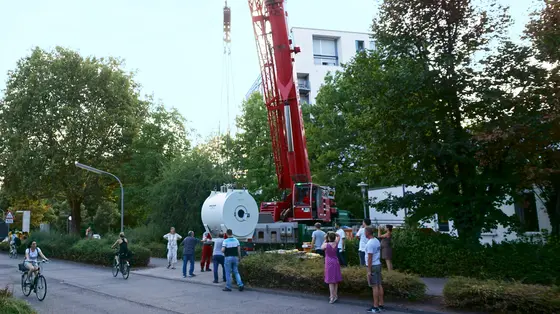A variety of imaging procedures provide insights into the body's interior. Each has its special advantages, but also its limits. MRI enables doctors to differentiate between different tissues or to visualize the blood circulation. The strength of positron emission tomography (PET), on the other hand, lies in the imaging of specific cell or tissue functions: Weakly radioactively labelled biomolecules, the “tracers“, are introduced into the metabolism and detected with high sensitivity in cells and tissues.
“We will get even more information if we use both methods at the same time,“ says Mark Ladd from the DKFZ. The physicist is therefore delighted that the DKFZ is now able to commission a worldwide unique combined device: It combines an MRI with an ultra-high magnetic field strength of 9.4 Tesla with a PET scanner.
The DFKZ researchers want to tackle important research projects in this way. Hypoxic tumor areas, for example, often prove to be particularly difficult to treat. The aim of the new scanner is to find out whether heavy ion radiation, for example with carbon particles, is superior to conventional photon therapy when treating these resistant areas. This has long been suspected because heavy ion radiation has a particularly high biological effectiveness. But this assumption has never been proven in the living organism.
Using combined imaging, DKFZ researchers hope to compare the oxygen-poor areas before and after photon and heavy ion therapy on tumor models. A special PET tracer, which specifically indicates oxygen-poor tumor areas, helps here. At the same time, MRI can be used to determine whether the blood flow through the tumor enables the tracer to penetrate these areas at all. Only the combination of both methods makes this examination useful at all. If the animals had to be carried back and forth between two examination devices, the images of the tiny anatomical structures would never be perfectly congruent.
Numerous other research projects will follow. “In particular, we are focusing on the development of new metabolic imaging methods in MRI and the evaluation of new PET tracers,“ explains Mark Ladd. “The aim is to identify molecules that play a central role in the metabolism of certain tumors and thus allow very specific detection. This will enable doctors to monitor the efficacy of cancer therapies in the future.
